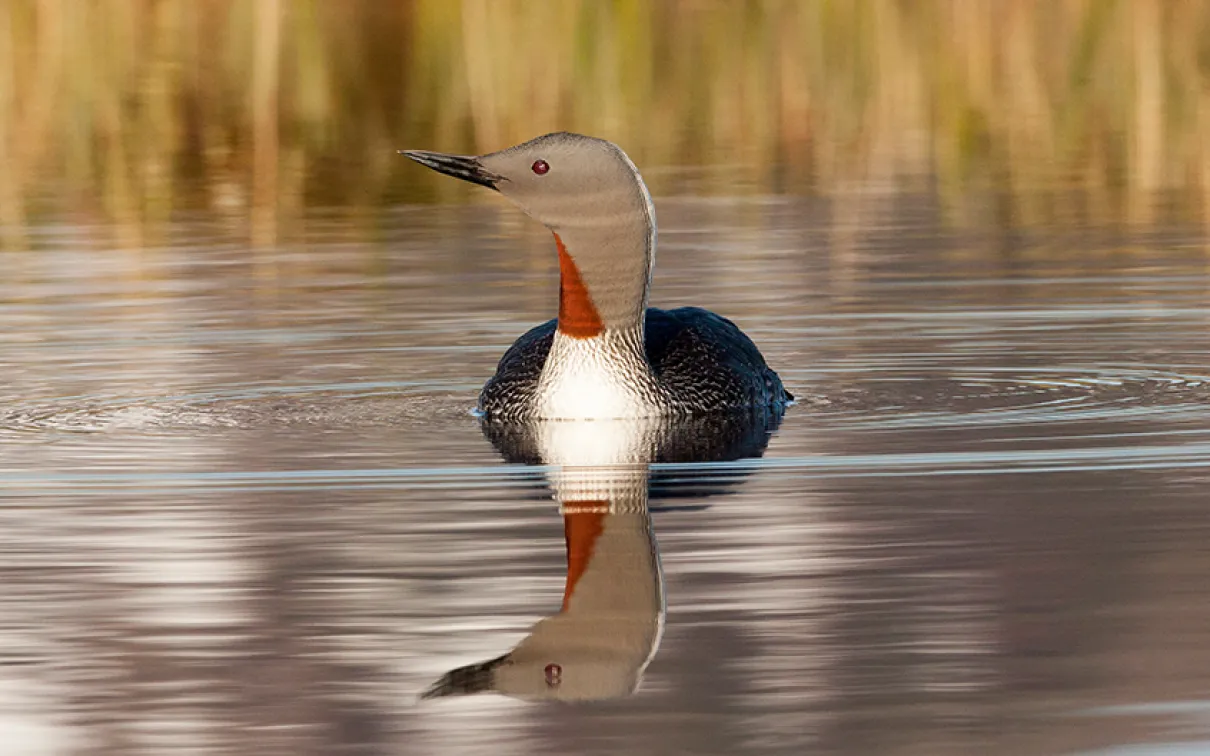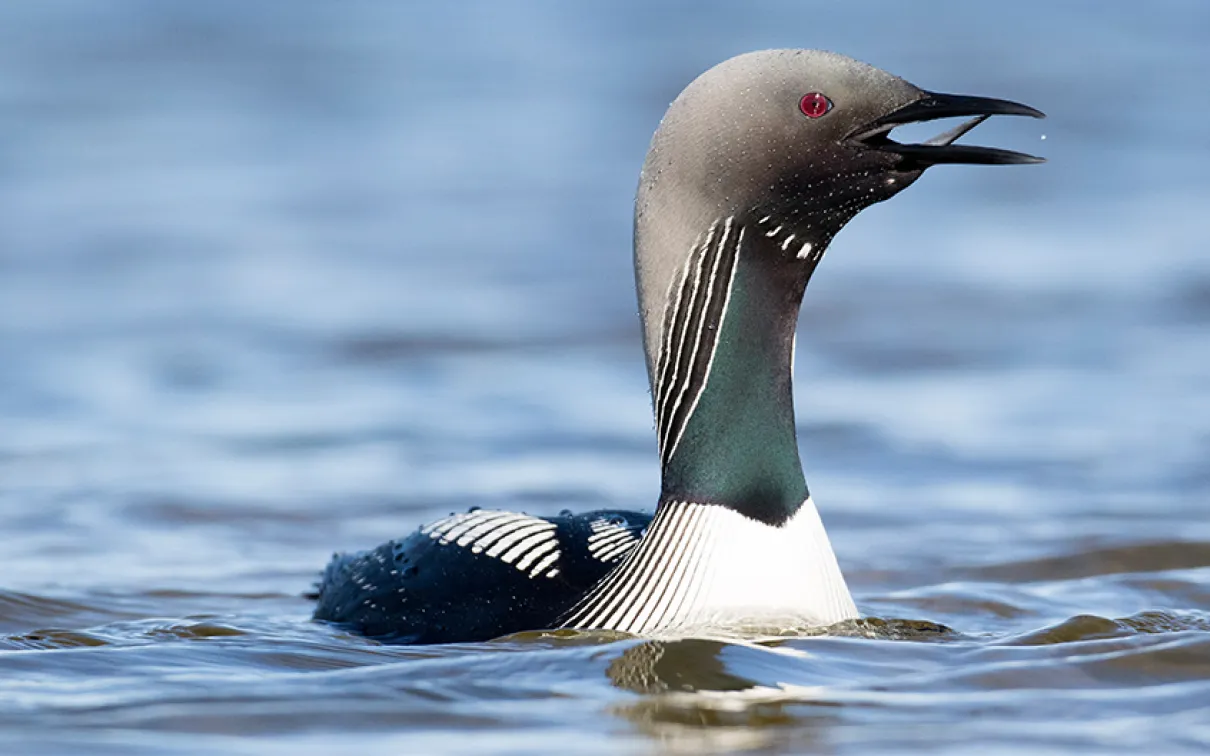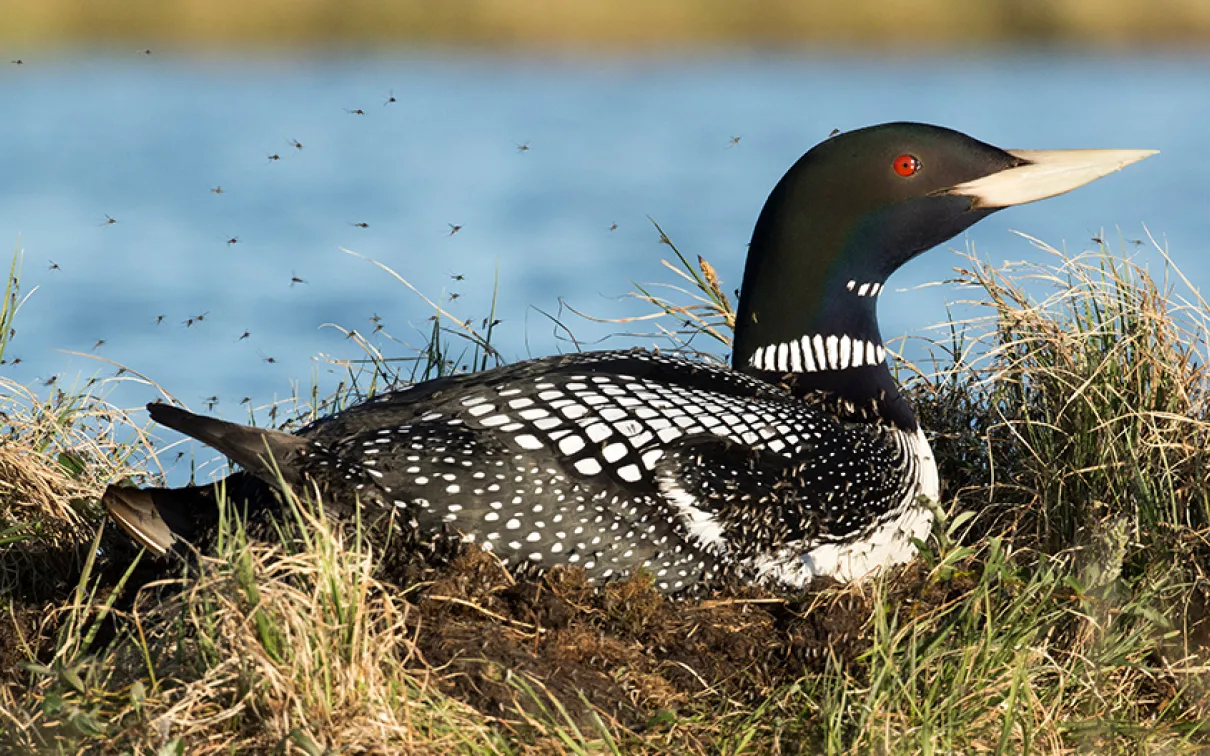A water dance of loons
The Canadian loons are back in season.
Published
Category
Author
When the long cold spring finally ends
When the long cold spring finally ends, my mind turns to the summer season of camping and rustic cabins. It’s at this point that thoughts of loons start to fill my head. The loon is the most recognizable bird in Canada. Some would suggest the Blue Jay might give it a run for the money, but it’s too late: the loon is already on our money and deep within the iconography of our nation. Loons are among the best symbols of our northern identity, easily recognizable, both visually and audibly. Their haunting wails and tremolos stir impressions of unknown wilderness while simultaneously representing home.
When most people speak of loons, they are usually referring to the Common Loon. However, there are in fact five loon species, four of which are found in North America. They all share a number of characteristics and have been placed in the same genus, Gavia, but each species exhibits differences in physical appearance, behaviour, and habitat.
The smallest and most unique of the family is the Red-throated Loon. It has a circumpolar breeding distribution and in Canada is most often found nesting on tundra ponds and lakes, although it might also be spotted in coastal regions as far south as the northern half of Vancouver Island and the north shore of the St. Lawrence River. It has a smaller bill and body than the other loons and is able to lift off from the water with a much shorter “run.” This quick take-off ability allows the Red-throated Loon to nest in smaller coastal ponds than the other loons, but it also means foraging away from its nesting pond, in the ocean or in nearby larger lakes.
Although possibly the most numerous of the loons, the Pacific Loon is seldom observed by people. This species frequents the northern Pacific Ocean during winter and breeds in the Arctic and Subarctic regions of northern Canada, Alaska, and eastern Russia. It is very similar in appearance to the Arctic Loon of Eurasia, and in fact these two were once considered a single species. Both require larger, deeper ponds than the Red-throated Loon, and like all loons, they rely on fish and aquatic invertebrates as their main food sources.
Gallery 1
We now come to our Common Loon
We now come to our Common Loon, the one and only! And when I say ours, I mean that as a Canadian. It is estimated that 94 percent of the global population of Common Loons breeds in Canada, with 70 percent in Ontario and Quebec. It is clearly our responsibility to look after them. Like many migratory birds, they are not obliged to stay in Canada throughout the year. Most Common Loons have left their breeding lakes by the end of October and don’t return until late April. Increased mercury in our lakes, oil spills, acid rain, botulism, commercial fishing practices, and habitat alterations all have an impact on loon populations in Canada.
The best way to describe our fourth loon species, the Yellow-billed Loon, is simply as a Common Loon with a yellow bill. Yellow-billed Loons breed in the larger lakes of the central and western Arctic of North America, generally north of the range of the Common Loon. They winter in the northwest Pacific Ocean. The Yellow-billed Loon has the smallest population of the five loon species, and due to its northern range it is probably the species least affected by human activity.
All loon species lay one or two eggs in a nest that is either on the water’s edge or very close to it. Both parents will incubate the eggs for 24 to 30 days, depending on the species, and will help look after the young. Red-throated Loon young are able to leave their natal lake as early as at six weeks, but it is 12 to 13 weeks before Common Loon young leave their lake of birth; this occurs a week or two after their parents have already left for the wintering grounds without them.
Want to Help Out a Loon?
Since 1981, Bird Studies Canada has been coordinating the Canadian Lakes Loon Survey to track Common Loon reproductive success by monitoring chick hatch and survival.
Citizen scientists, cottagers, anglers, birders, and loon lovers of all ages can participate by checking their favourite “loon lake” three times during the summer: a visit in June to see if loons are on territory, another in July to see if there are chicks, and a final visit in August to see if the young are close to fledging.
Participants not only will be helping loons but will also be acting as stewards for their favourite lakes and fishing spots. Results come in from across the country and, combined, they play a critical role in understanding the impact human activity is having on the health of our loons and our lakes.
Mark Peck
Mark Peck is Manager of the Schad Gallery of Biodiversity at the Royal Ontario Museum.










